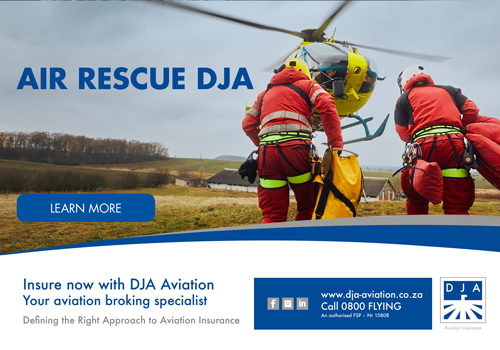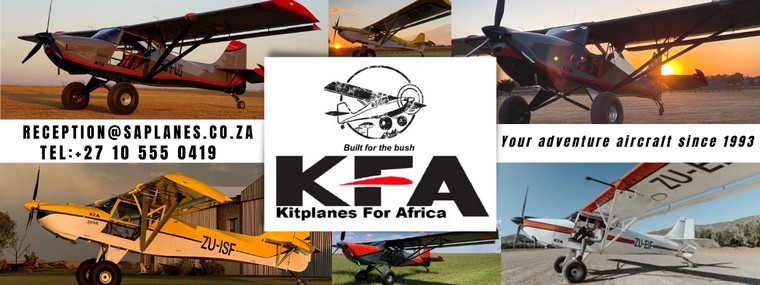

















Life Hacks For Pilots Part II
By A Pilot
Google Banner Ad
As I am writing this, the first fat, ice-cold, rain drops start hitting the ground hard. Isolated at first, then more and more in quick succession, warning you to take cover quickly. There is hardly a louder or prettier sound than the millions of rain drops bombarding the corrugated iron roof for a solid thirty minutes. Especially when you just got into the strip just before the precipitation started.

Having heard a few stories of infected bites and weakened friends, my heart started racing and my breathing went a funny kind of shallow. Thinking of my two mates who got tick bite fever so badly, that it kept recurring, rendering them incapable of kuiering for a month or two, sent such adrenaline through me it put me into fight or FLIGHT mode. Before I knew it, I was in the bakkie driving to the crop sprayer's house, for some solid advice, with just a towel somewhere around me. I can't actually remember, if I took the towel or not. It somehow seemed unimportant as I ran towards the house after the staff had let me through the gate.
Long story short: you immediately enter the shower again, but put only the affected body part into the spray. Make the water so hot, that it hurts, as hot as you can handle. Don't worry about the red spot that won't go away for days... Just before blisters will surely form and you can't take the pain anymore, the tick lets go and is flushed off you including the head. Pilot 3: Goggas:0. Treat the bite with Dettol or similar and close it with Vaseline.
I gratefully accepted an oversized sweat stained shirt, clearly one of my colleagues' old favourites plus some shorts. Avoiding eye contact with the gardeners / gate staff as if they were road kill, I drove back to the accommodation half an hour later. Who knew that thunder showers and tick removals have a time frame in common...


Feeling like I had to thank God for sparing my life that day, we had a few G&Ts that afternoon for sundowner's. The favourite drink of many an expat, Gin and Tonic was invented to swallow down the bitter quinine powder against Malaria, by adding sugar and Gin, only later did someone add the lemon to protect against scurvy. Since the Dutch were the first to distil this type of alcohol using Juniper berries, it soon also became known as Dutch Courage amongst English speakers.
Speaking of Courage: in the French Speaking African parts the locals have an endearing habit: when you are power walking along the dusty roads and you're the usual 80 metres behind your training partners, sweating and heaving in the muggy air, they shout at you: "Courage, Courage!!!" Meaning: if you don't die now, you will surely make it. I did notice, that they didn't shout "Courage" to the others ahead...

But this chapter is about Life hacks for pilots, so let me tell you about my best friend ever: Duct Tape. Best invention since the wheel. Besides the obvious uses, in order to sleep better, I stick it over the irritatingly glaring light on the Aircon numbers in the room. It will still let you see the degrees that you set the AC to, but will dim the light enough to darken the room sufficiently at night.




In fact, when night flying, I always plan according to moon phases and cloud cover. In places where the local medical facilities consist of a place by the name of: "Come Again Clinic" and is situated in the vicinity of the "Good Luck Beauty Clinic" and "Tears Of Joy Unisex Hair Salon", one tends to become extra cautious...


A few other ways I have become extra cautious: as a bush pilot: keep a hand on the flap lever on short finals. When the elephant suddenly emerges out of the trees and walk-jogs across the strip, you can add a bit of last-minute flap and bulge over the animal. The same on take-off when the tortoise labours across the runway, and by the time you get to it on your take-off roll, you realise why the hare lost the race, because the bulky bugger made it to the middle of the strip faster than you can wipe the sweat out of your eyes. Add a bit of flap, pop over the animal and then continue your take off roll. Suddenly I feel like I need to mention that all tips here are without guarantees and repeated at own risk.
Less risky advice: If you can't make out where the wind is coming from because there is no smoke or water or windsock: look at the way the cloud's shadows move over a fixed point on the ground on the descent and it'll give you a relatively good idea. Trees and grass can sway back and forth and are therefore a bit unreliable. Leadwoods don't move at all, which can be misleading.

Always know where the buildings are compared to the strip. they can be easier to spot than the strip, especially corrugated iron roof huts.
Roll your clothes when packing the suitcase and then put the pilot shirts on top. That way one can druk 30% more vacuum packed Biltong into the suitcase and the shirts don't crease. THE most time saving life hack for pilots: Don't ever stand behind an East Asian/ Chinese looking individual in the passport queue, or the airport security scanner, unless you have a long layover to get back to base and there is no sports bar. They often try to smuggle weird food stuffs or unidentifiable gross organic matter on board and are therefore like a red cloth to the bull for the security staff. Since that rumour, where dozens of Chinese arrived with the same passport at Tambo airport, the staff there have grown more cautious as well.
Lastly for the bush pilots: Don't wear dark blue or black clothes in the bush where Hippo Flies and TseTse roam. They wait for you in the Mopani Forests and can spot an open game drive vehicle from miles away. As soon as the Landy stops, they'll bite you right through your blue jeans. Pilot 3: Goggas 6.

Dornier 27 Movie Star

Google Banner Ad
 |
 |
 Copyright © 2024 Pilot's Post PTY Ltd
The information, views and opinions by the authors contributing to Pilotís Post are not necessarily those of the editor or other writers at Pilotís Post.
Copyright © 2024 Pilot's Post PTY Ltd
The information, views and opinions by the authors contributing to Pilotís Post are not necessarily those of the editor or other writers at Pilotís Post.